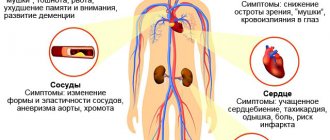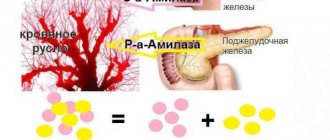Numbness in the head is a situation familiar to many; this symptom can often be observed after sleep, when the neck or back of the head becomes numb as a result of an uncomfortable body position. If the malaise is one-time and short-term, this is not a cause for alarm and the problem can be dealt with at home.
But in cases where the head goes numb periodically, and other problems are added to this problem, for example, dizziness or rapid heartbeat, you will need to consult a specialist. Such symptoms may be a sign of a number of diseases that require medical intervention.
Why does my head go numb?
There are situations when slight numbness of the scalp is not a cause for alarm. This occurs in cases where such discomfort is caused by the following factors:
- A sharp turn of the neck. In such situations, you may not only feel numb and dizzy, but also feel as if you have goosebumps running all over your body. This is caused by vascular spasm as a result of jerky movement.
- Sleeping in an awkward position. When a person is in a horizontal position and an unnatural position for a long time, and then suddenly stands up, symptoms such as numbness of the face, slight loss of balance, heaviness or short-term pain in the head may be observed.
- Staying in one position for a long time (leaning towards the table or computer monitor). In such situations, the muscles quickly become numb, which can result in numbness in the back of the neck, occipital and parietal areas of the head and a short-term loss of sensation in these places.
A person’s condition is considered normal if the right or left side of the head is numb for no more than 10-15 minutes, after which the ailment disappears. You can help yourself, change your body position and give a light massage to the stiff area. But there are a number of cases when the help of specialists is required immediately.
How does this symptom manifest itself?
It is worth noting that numbness of the head is not an independent disease, but a symptom. It can occur in completely different diseases. Hypoesthesia (another name for the symptom) may also be accompanied by various symptoms. The patient often complains of feeling dizzy and numb at the same time. The reasons lie in many diseases. Sometimes one part goes numb.
Usually, if hypoesthesia appears suddenly and also goes away abruptly, then doctors recommend consulting a neurologist. It is also important to quickly consult a specialist if, along with numbness, it is difficult for the patient to talk or move, or if uncontrolled urination occurs. As a rule, such serious symptoms indicate the presence of complex diseases in the human body, and the sooner treatment is started, the higher the patient’s chance of full recovery.
What diseases does the disease indicate?
A condition where the skin on the right or left side of the head is numb can be caused by the following reasons:
- Stress and overwork. A person’s reaction to physical activity and emotional stress is individual and can be accompanied by various manifestations, including numbness of any parts of the body. Often, together with these signs, others appear, for example, the cheek periodically begins to twitch or the lips tremble, and the cheekbones also tighten.
- Head or cervical injuries. After a bruise, a short period of numbness is considered normal, but if it lasts several days and the symptoms intensify, such manifestations may indicate a concussion or other serious injuries.
- Colds and ENT diseases. The patient may have a numb head and a stuffy nose as a result of normal hypothermia, and sinusitis also causes similar discomfort.
Diseases that affect one or another part of the spine quite often affect blood vessels, resulting in spasm and various unpleasant conditions such as numbness, high blood pressure, etc.
Cervical osteochondrosis.- Migraine . It most often affects the temporal region, manifesting itself as severe aching pain and tingling. But in some cases, a person may feel numbness not only in the problem area, but also in the entire head.
- Pinched nerve. If the facial, maxillary, triangular or ophthalmic nerves are damaged, this will not only cause numbness in the affected area. A person feels a dull pain that presses on the temples, crown, bridge of the nose and other areas of the head.
- Vegetovascular dystonia (VSD). With such disorders, discomfort in the form of numbness of certain parts of the body often occurs, and the person may also feel dizziness and mild nausea.
- Stroke . This disease develops as a result of impaired cerebral circulation, which leads to oxygen starvation. This provokes a condition when individual parts of the body begin to become numb or numb.
- Multiple sclerosis . Since this disease is associated with pinching of connective tissues and disruption of normal reactions in the body, such a condition can cause numbness of the face, loss of sensitivity, decreased vision, hearing and sensitivity to irritants.
- Bell's palsy. This condition is characterized by damage to the facial muscles, as well as complete or partial numbness of the head. The causes of such manifestations are viral infections affecting nerve endings.
- Neoplasms in the brain. As the tumor grows, it begins to put pressure on the skull, which can cause pain, a feeling of numbness, impaired coordination of movements and other manifestations.
- Reaction to medications. Most medications cause side effects, including numbness or tingling in some parts of the body.
Hypothermia
Numbness in the head can occur when exposed to low temperatures. Due to spasms in the vascular walls, problems arise with the blood supply to the tissues.
This causes deterioration of sensitivity in some areas or throughout the entire plane of the skull. Prolonged exposure to a draft contributes to the feeling of goosebumps.
When emergency medical attention is needed
To avoid serious complications and maintain health, you should not postpone a visit to the clinic in the following cases:
- signs of the disease appear frequently;
- the state of numbness lasts a long time, sometimes up to 2 hours;
- the patient experiences an increase in body temperature;
- numbness is accompanied by acute pain, reminiscent of a blow, and radiating to the temples, eyebrows, eyes, jaw, forehead, crown and other areas;
- during attacks, dizziness, loss of coordination of movements, partial loss of vision or hearing occur;
- not only the skin of the right and left half of the head becomes numb, but also the fingers, lips or the tip of the tongue;
- blood pressure rises or falls sharply;
- other signs of health problems appear.
The listed situations are considered grounds for seeking medical help, since such manifestations are a signal of trouble and the presence of disorders in the body of varying degrees of severity.
Pinched nerve endings
Numbness in the back of the head and other places on the head is characteristic of damage to the spinal, trigeminal facial nerve or fibers that provide sensitivity to the upper jaw. The condition can develop as neuralgia and be accompanied by inflammation. Pinching occurs as a result of painful dilatation of blood vessels, the appearance of adhesions after injury or surgery. With disorders of the spinal fibers, numbness of the occipital part occurs. The trigeminal nerve can be damaged, facial numbness occurs, and facial expressions change.
Numbness may be accompanied by sharp and severe pain. Symptoms appear at the site of innervation of nerve fibers. Touching the area is aggravated by symptoms, rubbing the skin, or exposure to cold.
Diagnostic features
To establish the exact reasons why the head goes numb, specialists conduct the following examinations:
- Complete blood test to confirm or exclude the presence of anemia.
- Ultrasound of the vessels of the brain and cervical spine. A diagnostic procedure is provided for cervical osteochondrosis to identify the degree of vascular damage.
- CT and MRI . These studies are carried out in cases where there is a suspicion of the development of a benign or malignant tumor in the brain.
- Radiography . This method allows you to exclude or confirm the possibility of bone displacement, as a result of which the nerve endings in the temples, eyes, crown or back of the head are damaged.
- Electroneuromyography . With the help of this study, it is possible to identify the specific nerve whose damage is the problem.
Multiple sclerosis
Often, patients with a diseased nervous system experience numbness. Causes vary, but numbness is often due to multiple sclerosis. This pathology is often diagnosed in the elderly, but sometimes applies to younger citizens.
Therapy for such a diagnosis is performed only by a medical specialist. You need to contact him without delay when clear signs of multiple sclerosis occur. Such symptoms include blurred vision, problems with skin sensitivity, difficulty in body movements and poor coordination.
During multiple sclerosis, the myelin sheath of nerve fibers becomes pinched by connective tissue, which negatively affects the perception of touch. Due to this, hypoesthesia occurs.
Treatment methods
Depending on the reasons that caused such ailment as numbness of the scalp and the right or left side of the face, the specialist will prescribe appropriate treatment. Typically, therapy includes:
- Impact on the provoking factor (the underlying disease).
- Non-drug methods of healing.
- Taking medications.
When a disease is detected, measures are first taken to eliminate discomfort. After this, accompanying symptoms often disappear on their own.
In the process of non-drug exposure, the following procedures are carried out:
- medical massage;
- magnetic therapy;
- acupuncture;
- acupuncture and other physiotherapeutic procedures.
These techniques allow you to eliminate pain, relieve muscle spasms and restore blood circulation in the scalp and cervical spine.
As part of drug treatment, in addition to medications aimed at treating the underlying disease, drugs from the following groups may be prescribed:
- drugs that regulate blood cholesterol levels;
- hormonal medications;
- antidepressants;
- anticonvulsants;
- medications that have a beneficial effect on cerebral circulation and vascular condition.
It is important to realize that timely and competent medical care will prevent the development of a serious disease and the occurrence of serious complications. For this reason, if alarming symptoms appear, you should immediately consult a doctor to avoid further health problems.
Skull injuries
Symptoms of brain dysfunction do not always occur after a blow to the head; symptoms often begin to appear 1-2 days after that. In such situations, patients experience numbness in the back of the head, frontal and parietal lobes, it all depends on the nature of the lesion. Aching, squeezing or shooting pain may occur.
When the injury is complex, fatigue, weakness, and memory problems occur. These symptoms persist for several hours after the change in position. This is a reason to visit a specialist.
Preventative methods for numbness
To prevent such an unpleasant ailment as numbness of the head, or to reduce the frequency of attacks in cases where specialists have not detected any serious disorders, you will need to adhere to certain recommendations for maintaining health. In addition, compliance with these rules will increase the effectiveness of treatment if any disease has been identified.
To improve your well-being, you will need to do the following:
- Avoid stress and try to be less nervous.
- Do not overwork and get enough sleep regularly, setting aside at least 8 hours for night rest.
- To refuse from bad habits.
- Eat right and monitor your weight.
- Spend more time in the fresh air, if possible, take walks before bed.
- Do gymnastics regularly to maintain muscle tone and prevent the development of osteochondrosis.
- Avoid hypothermia and colds.
- Monitor blood pressure and vascular condition.
- Treat emerging diseases in a timely manner.
In most cases, the listed measures help prevent the occurrence of numbness of the head and accompanying ailments, and if such a problem already exists, reduce the frequency and intensity of attacks.
Hypoparathyroidism
Pathology caused by a lack of hormones produced by the parathyroid glands. It can be congenital, autoimmune, postoperative, idiopathic or post-traumatic. Problems with metabolism cause metabolic disorders. One of the symptoms is a deterioration in sensitivity against the background of worsening circulatory processes and breathing problems.
This disease is different:
- Numbness of the top of the head.
- Fainting state.
- Dizziness.
- Intense sweating.
- Ringing in the ears.
- Irritability.
- Convulsive state.
Brain neoplasm
As tumors grow, they affect surrounding tissues. Therefore, patients experience headaches and tingling sensations in different places. Large formations can compress nerve fibers and blood vessels, functionally significant centers. Sometimes the clinical picture is supplemented by pain in the head, weakness, and problems with concentration.
Taking into account the location of the tumor, patients’ vision and hearing deteriorate, and problems with coordination of movements begin.











